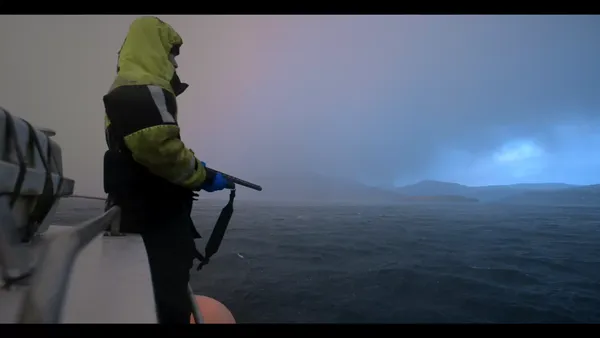 |
| The Islands And The Whales Photo: Ged Fitzsimmons |
In the far north, where the sea rages and the few outcroppings of land have soil so thin that barely anything can be grown there, live the Faroese. Surviving for centuries by hunting and fishing, they now find that pollution and climate change are threatening to make their traditional way of life obsolete. Mike Day spent four years with them to make documentary The Islands And The Whales, discovering a way of looking at the world that is rarely featured onscreen. I asked him how it all began.
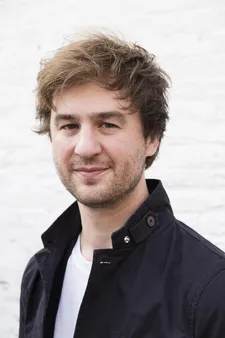 |
| Director Mike Day Photo: Ged Fitzsimmons |
"It was while I was filming The Guga Hunters Of Ness," he explains, "that I met a group of Faroese sailors in Stornoway harbour. We'd all just been out being battered on the Atlantic - I don't know what the hell we were doing out on those seas - so we told them we were filming the last ten seabird hunters in Europe and they said 'Well, we do it too. Do you want to come and see our hunting?'
"At that point, having spent weeks on a boat and been seasick, we weren't exactly wanting to go farther north, but a year later we did. And, of course, it wasn't just birds they hunted, it was whales as well. Then we discovered that the story was not going to be about hunting, it was about the realities of what we'd done to the natural world. For all the controversy around the hunting, the bad guys immediately seemed to be us, regardless of how you feel on the hunting."
I ask if he personally found the whale hunts difficult to be around.
"I took four months of waiting before there was a whale hunt," he says. "It's never an easy thing to see lots of animals being killed, but the atmosphere is slightly counter to what you might expect when you're actually there. There's a very primeval adrenaline and everyone switches into this hunter mode. They actually now try to do it as quickly as possible and there's some pride in trying to do it as humanely as possible, but that's of little comfort to someone who doesn't agree with the killing of whales in the first place, of course. There's a quiet tension before the hunt which is quite poignant in itself, and then it's all over quite quickly.
"From a filming perspective, I had to be considering the language of how I was shooting it as I was shooting it. At the same time, we were waist-deep in blood red, freezing cold water. The wind from the tails was sweeping my face. If we'd been a little closer, those tails will kill you. We wanted to recalibrate the audience to feel how it was to be there rather than come to it with the prejudices you might have. At the same time we had to not sanitise it and also not sensationalise it. So it's a very fine line to walk in the middle of this maelstrom.
"I was going to say we had people watching our backs, but in the middle of a hunt like that there's too much going on for anyone to really watch your back. There were some moments when the whales were thrashing around very violently."
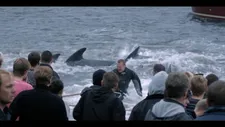 |
| Whale hunting in The Islands And The Whales Photo: Ged Fitzsimmons |
Over the course of the film, we learn that whale hunting presents another danger - it's leading to islanders consuming dangerously high levels of heavy metals, notably mercury, which are putting their health at risk. I ask if this was a story that developed over the course of the film or if people knew about it beforehand.
"It was relatively recent news and I think it was something that people were still processing to some extent," Mike says. "There was a lot of people that we met that were rubbishing the science and either were in denial or thought that it was part of anti-whaling propaganda. The film has actually really helped to recalibrate that and have those people receive that information from a source that wasn't an anti-whaling one.
"The conversation had been going on so it wasn't so new, but at the first time you see the family discovering their mercury levels for the first time, so obviously on a personal level it was new, when it comes home to that degree."
How did he get to know the islanders who feature in the film?
"We drank a lot of schnapps!" He laughs. "It's the whole reason we got to film anything. We were there for a long time - 53 weeks of filming spread over four years. We filmed one month and then three months and then the first whales came, and then we went back in the summer for another three months. We were living there, basically. And it's a small community, which is why when Danish Navy SEALs are rugby tackling activists from Australia on the beach it's quite a show. The hunts became more popular, if anything, as a result."
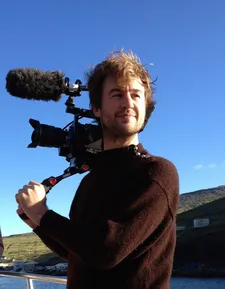 |
| Mike Day filming in the Faroes Photo: Ged Fitzsimmons |
I ask about the huge culture clash between the activists and the local people, how that played out, and how Mike approached presenting it in the film.
"The activists were there with good intentions but there was a lot of misinformation," he says. "Some of them thought that they weren't hunting for food at all, or that it was a festival, or that it happened on a certain day at a certain time or that it was a right of passage. A lot of them had just been misinformed. And that was one of the starting points for me with the film, seeing those emails that were flying around that were just grossly incorrect factually, and so, from a documentarian's perspective, there were some things to correct. The whales are not endangered, it's not a festival, and they hunted for food. And of course, now, as people reduce their consumption, that will have to be reassessed. If they're eating less then they should be hunting less, and that is certainly the intention of people there."
Did the islanders have much prior experience of anti-whale hunt activists?
"It hadn't happened on that scale before, when they arrived in 2014," he says, but goes on to explain that back in the Eighties encounters with activists led the Faroese to change their hunting methods so that they were more humane. "It's an imperfect process because you're trying to deal with lots of large wild animals so it does go wrong sometimes, but there is an intention to do everything they can to do it as best they can."
The film is wrapped in a narrative about the huldufólk, the secret people said to have lived on the Faroes before Norsemen arrived to settle them, and said to have had a bond with nature, an understanding of balance, that modern humans have lost.
The old reverence for natures, Mike suggests, could also manifest as a fear of wronging it. "In modern times we don't have that fear because the implication of our actions isn't as immediate or desperate, but back in the day when you were relying on puffins as your primary source of meat and there wasn't a shipping container full of noodles coming next week, then if you didn't look after that hillside and the next year only half as many puffins came back then you were going to starve. So I felt that that old, primeval understanding, through whatever metaphor it came, there was something in that that had been lost but that they had held onto more than most, and some of the elder folk really believed in the huldufólk still.
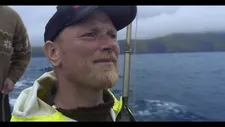 |
| Setting sail Photo: Ged Fitzsimmons |
"The grandfather in the film grew up in a time when they had no roads and they had no electricity. They used to row across the fjords to go dancing. In one generation they went from living something closer to a Medieval existence to being modernised to the point where they now have the highest per capita Facebook users in the world, apparently. With the rapidity of that modernisation they've done very well, but they're no angels either, they're using all the same things that we are that are polluting things. They're also implicated in the damage of modern life."
The other thing that really stands out about the film is how beautiful it is. I ask Mike how he approached getting the distance shots of the islands.
"Some of them I actually climbed onto the roofs of ships as they were coming in," he says with a laugh. "They made for nice dolly shots. And a lot of them are filmed with helicopters because some of the islands the sea is so rough that you can't get to them by boat for about nine months of the year so we had to take helicopters but they were like thirty quid for a helicopter because they're subsidised. We actually spent quite a bit of time going back and forth in these choppers so I managed to grab a fair number of aerial shots.
"Filming those landscapes, it took a while to figure out how to do the majesty of them justice. They're quite epic when you're down beneath them."
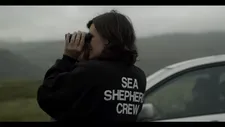 |
| Watching over the seas Photo: Ged Fitzsimmons |
So what's next for Mike? He has a project "kind of flowing on" from The Islands And The Whales that's set in Greenland, but he can't say much about it at present. Then there's the one he's been filming for the past year, about cowboys "in the Wild West" who hold poetry gatherings.
"With the cowboy story, it's another turning upside-down of stereotypes but it's a great way to explore the myths of American exceptionalism."
The Islands And The Whales is opening in UK cinemas this week.





















